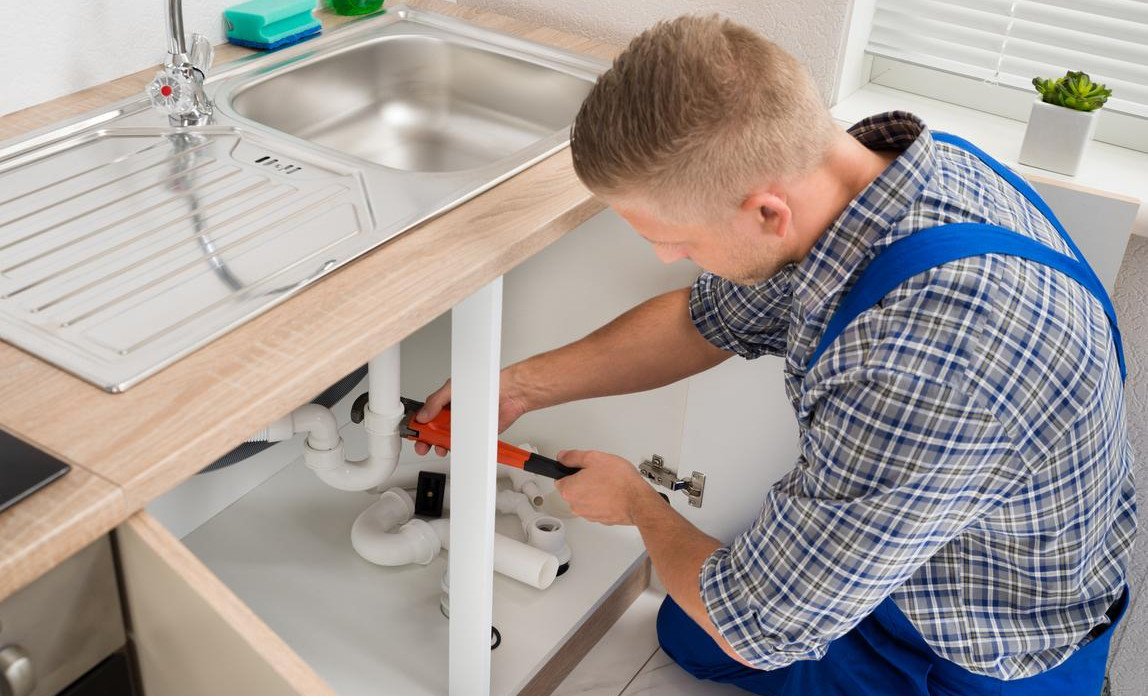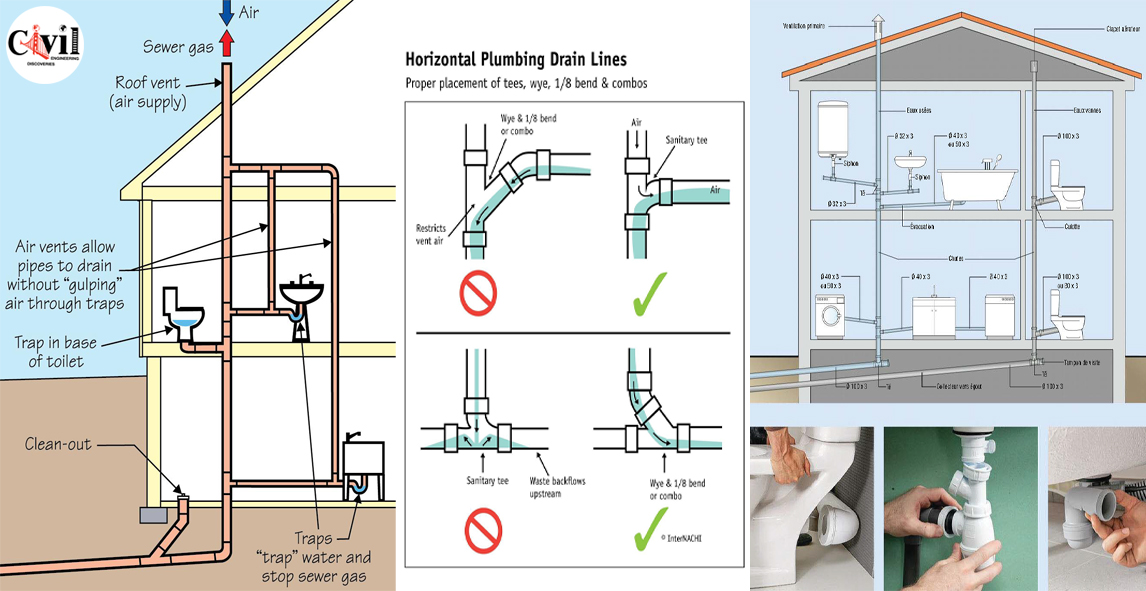Key Information About Your Home's Plumbing System Anatomy
Key Information About Your Home's Plumbing System Anatomy
Blog Article
Just about everyone will have their own individual conception about Plumbing Installation 101: All You Need to Know.

Understanding how your home's plumbing system functions is essential for each home owner. From delivering clean water for alcohol consumption, cooking, and bathing to securely getting rid of wastewater, a well-maintained plumbing system is vital for your household's wellness and comfort. In this extensive guide, we'll check out the detailed network that makes up your home's pipes and offer suggestions on upkeep, upgrades, and taking care of common problems.
Intro
Your home's pipes system is more than just a network of pipes; it's a complicated system that guarantees you have accessibility to tidy water and efficient wastewater elimination. Knowing its elements and just how they collaborate can aid you prevent expensive fixings and ensure whatever runs efficiently.
Basic Parts of a Pipes System
Pipelines and Tubing
At the heart of your pipes system are the pipelines and tubing that lug water throughout your home. These can be made of different products such as copper, PVC, or PEX, each with its advantages in terms of longevity and cost-effectiveness.
Fixtures: Sinks, Toilets, Showers, etc.
Components like sinks, commodes, showers, and bathtubs are where water is utilized in your house. Recognizing how these fixtures link to the pipes system aids in detecting problems and preparing upgrades.
Shutoffs and Shut-off Factors
Shutoffs manage the flow of water in your plumbing system. Shut-off valves are critical during emergencies or when you need to make repairs, allowing you to separate parts of the system without interfering with water circulation to the whole residence.
Water System
Key Water Line
The primary water line links your home to the community water or a private well. It's where water enters your home and is distributed to various fixtures.
Water Meter and Pressure Regulator
The water meter steps your water usage, while a pressure regulator guarantees that water streams at a risk-free stress throughout your home's pipes system, stopping damages to pipes and fixtures.
Cold Water vs. Hot Water Lines
Comprehending the difference in between cold water lines, which supply water directly from the primary, and hot water lines, which bring heated water from the water heater, helps in troubleshooting and planning for upgrades.
Drainage System
Drain Pipes Piping and Traps
Drain pipelines lug wastewater far from sinks, showers, and bathrooms to the drain or sewage-disposal tank. Traps prevent sewer gases from entering your home and likewise catch particles that can trigger blockages.
Ventilation Pipes
Air flow pipelines permit air right into the drain system, avoiding suction that could slow water drainage and trigger traps to empty. Proper air flow is vital for maintaining the integrity of your pipes system.
Value of Appropriate Drainage
Making sure proper water drainage protects against back-ups and water damages. Consistently cleansing drains pipes and keeping catches can stop costly repairs and extend the life of your plumbing system.
Water Furnace
Sorts Of Hot Water Heater
Hot water heater can be tankless or standard tank-style. Tankless heating units heat water as needed, while containers keep heated water for immediate usage.
Exactly How Water Heaters Connect to the Pipes System
Understanding just how hot water heater connect to both the cold water supply and warm water distribution lines assists in diagnosing problems like not enough hot water or leakages.
Upkeep Tips for Water Heaters
Consistently flushing your hot water heater to eliminate sediment, inspecting the temperature setups, and examining for leakages can extend its life-span and boost energy performance.
Typical Pipes Concerns
Leaks and Their Reasons
Leaks can take place because of maturing pipes, loosened fittings, or high water stress. Addressing leaks without delay avoids water damages and mold and mildew growth.
Obstructions and Blockages
Blockages in drains and bathrooms are usually triggered by purging non-flushable items or an accumulation of grease and hair. Making use of drainpipe screens and being mindful of what drops your drains can avoid obstructions.
Signs of Plumbing Troubles to Watch For
Low water stress, slow drains, foul odors, or uncommonly high water costs are signs of prospective pipes problems that ought to be attended to promptly.
Plumbing Upkeep Tips
Normal Inspections and Checks
Schedule annual plumbing assessments to capture concerns early. Seek indicators of leakages, deterioration, or mineral build-up in taps and showerheads.
Do It Yourself Upkeep Tasks
Straightforward tasks like cleaning faucet aerators, checking for toilet leaks using dye tablets, or shielding revealed pipelines in cool environments can stop significant plumbing problems.
When to Call an Expert Plumbing
Know when a plumbing issue requires professional proficiency. Attempting complex fixings without correct expertise can cause more damage and higher fixing prices.
Updating Your Plumbing System
Reasons for Updating
Updating to water-efficient components or replacing old pipes can boost water top quality, minimize water expenses, and increase the worth of your home.
Modern Pipes Technologies and Their Benefits
Discover innovations like wise leak detectors, water-saving commodes, and energy-efficient hot water heater that can save money and lower ecological impact.
Cost Factors To Consider and ROI
Determine the upfront prices versus lasting cost savings when taking into consideration pipes upgrades. Numerous upgrades pay for themselves via minimized utility costs and fewer fixings.
Ecological Impact and Preservation
Water-Saving Fixtures and Devices
Setting up low-flow faucets, showerheads, and commodes can substantially reduce water use without compromising performance.
Tips for Minimizing Water Use
Basic habits like dealing with leaks without delay, taking shorter showers, and running full tons of laundry and meals can conserve water and reduced your utility costs.
Eco-Friendly Plumbing Options
Take into consideration sustainable pipes materials like bamboo for floor covering, which is durable and environment-friendly, or recycled glass for kitchen counters.
Emergency Preparedness
Actions to Take During a Pipes Emergency
Know where your shut-off shutoffs are located and exactly how to switch off the water in case of a ruptured pipe or significant leakage.
Significance of Having Emergency Situation Get In Touches With Convenient
Keep get in touch with details for neighborhood plumbings or emergency situation services easily available for quick feedback during a pipes situation.
DIY Emergency Situation Fixes (When Applicable).
Short-term solutions like using air duct tape to patch a dripping pipe or putting a container under a dripping faucet can lessen damages until an expert plumbing professional arrives.
Conclusion.
Comprehending the makeup of your home's plumbing system equips you to preserve it properly, saving time and money on repair services. By adhering to regular upkeep routines and staying informed regarding modern-day pipes technologies, you can ensure your pipes system runs successfully for years to find.
HOW YOUR PLUMBING SYSTEM WORKS
Which Pipes Do What?
Blue lines = fresh water supply entering the building
Red lines = hot water supply entering the building
Grey lines = pipes carrying waste away from the building and venting pipes carrying gases away from the building (through the roof)
YOUR MAIN PLUMBING SYSTEMS
There are two main plumbing systems that support your home s basic plumbing needs one that brings clean water into your home, and one that sends dirty water away from your home. Connected to the toilet, bath, shower, and other faucets in your home, these two systems keep your water flowing in the right directions.
ACCESSING FRESH WATER
Fresh and clean water is brought into your home through the main water supply line . Filtered through one pipe, this water is pressured to flow into the various fixtures in your home at any given time.
This water can be sourced from a well located on your property, a pond or river (mostly cottages), or, as in most cases, from the city s municipal water treatment centre. However, it is important to note that water that is untreated, such as the water siphoned from ponds or rivers, may not be safe to drink. Personal water supplies always need to be treated for hardness and contaminants before consumed.
MUNICIPAL WATER SUPPLIES
Improve taste and odour
Remove sediment
Eliminate hardness
Reduce chlorine
COLD WATER SUPPLY VS. HOT WATER SUPPLY
Cold water flows into your home or building through the service line, which then distributes hot or cold water to your fixtures. This line is most commonly run through a central column that runs floor to floor. Hot water runs in short and straight pipes as the longer the pipeline, the more heat that will be lost in the transfer. Having shorter pipes also allows residents to access hot water more quickly.
WASTE WATER SYSTEM
Your wastewater system is divided into two parts pipes that send wastewater away from your home and venting pipes that send sewer gas away from your home. Sewage water travels through pipes that flush the water and waste towards local sewers that are operated and managed by your city or town. Most sewer systems rely on gravity to move the wastewater to where it needs to go.
The further away from your toilet or sink, the larger wastewater pipes become. This allows for waste to be disposed of from various parts of your home or business at once without pipe blockages. The angle and flow of these pipes are also essential for keeping your waste pipes clear of build up.
https://harrisplumbing.ca/how-your-home-plumbing-system-works/

HOW YOUR PLUMBING SYSTEM WORKS
Which Pipes Do What?
YOUR MAIN PLUMBING SYSTEMS
There are two main plumbing systems that support your home s basic plumbing needs one that brings clean water into your home, and one that sends dirty water away from your home. Connected to the toilet, bath, shower, and other faucets in your home, these two systems keep your water flowing in the right directions.
ACCESSING FRESH WATER
Fresh and clean water is brought into your home through the main water supply line . Filtered through one pipe, this water is pressured to flow into the various fixtures in your home at any given time.
This water can be sourced from a well located on your property, a pond or river (mostly cottages), or, as in most cases, from the city s municipal water treatment centre. However, it is important to note that water that is untreated, such as the water siphoned from ponds or rivers, may not be safe to drink. Personal water supplies always need to be treated for hardness and contaminants before consumed.
MUNICIPAL WATER SUPPLIES
COLD WATER SUPPLY VS. HOT WATER SUPPLY
Cold water flows into your home or building through the service line, which then distributes hot or cold water to your fixtures. This line is most commonly run through a central column that runs floor to floor. Hot water runs in short and straight pipes as the longer the pipeline, the more heat that will be lost in the transfer. Having shorter pipes also allows residents to access hot water more quickly.
WASTE WATER SYSTEM
Your wastewater system is divided into two parts pipes that send wastewater away from your home and venting pipes that send sewer gas away from your home. Sewage water travels through pipes that flush the water and waste towards local sewers that are operated and managed by your city or town. Most sewer systems rely on gravity to move the wastewater to where it needs to go.
The further away from your toilet or sink, the larger wastewater pipes become. This allows for waste to be disposed of from various parts of your home or business at once without pipe blockages. The angle and flow of these pipes are also essential for keeping your waste pipes clear of build up.
https://harrisplumbing.ca/how-your-home-plumbing-system-works/
I have been very enthusiastic about The Inner Workings of Your Home's Plumbing and I am hoping you appreciated our post. Are you aware of anybody else who is looking into Anatomy of a House: Understanding the Components? Feel free to share it. Thank-you for your time spent reading it.
Book Your Service Report this page